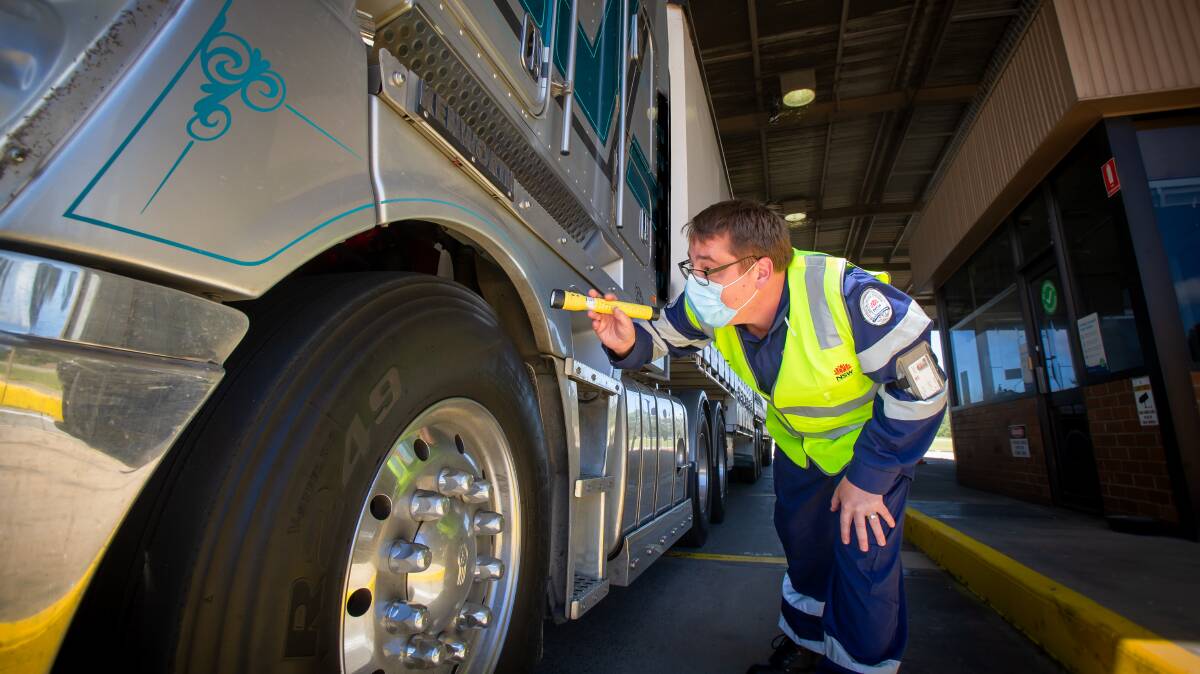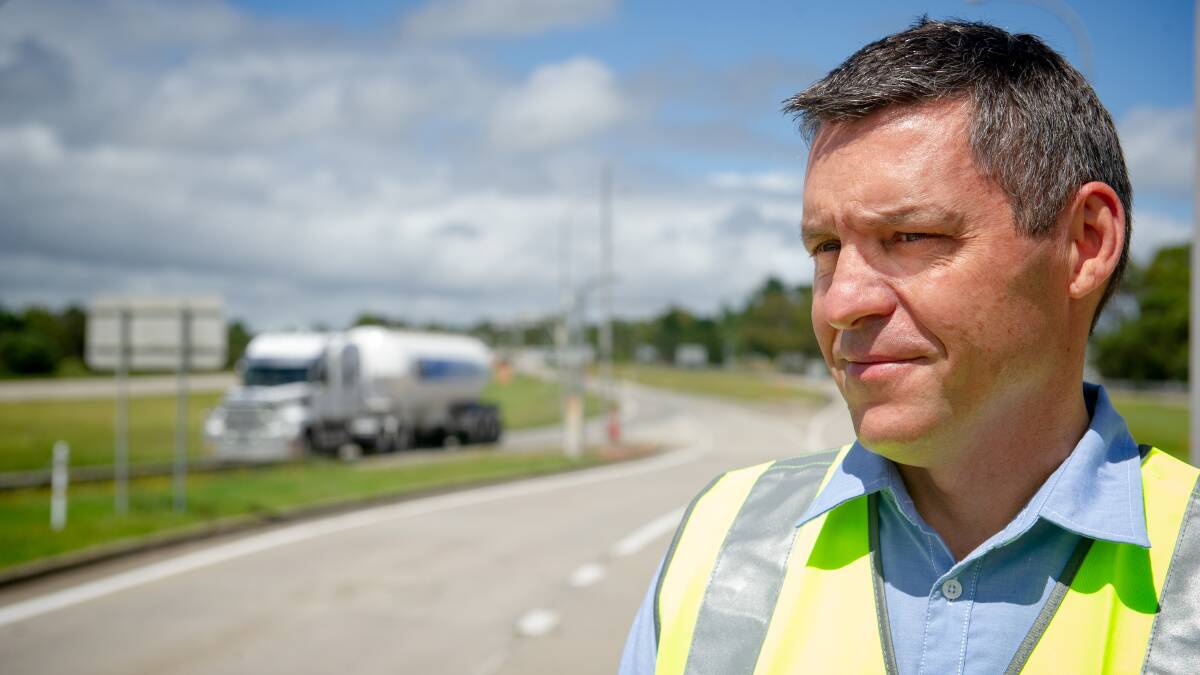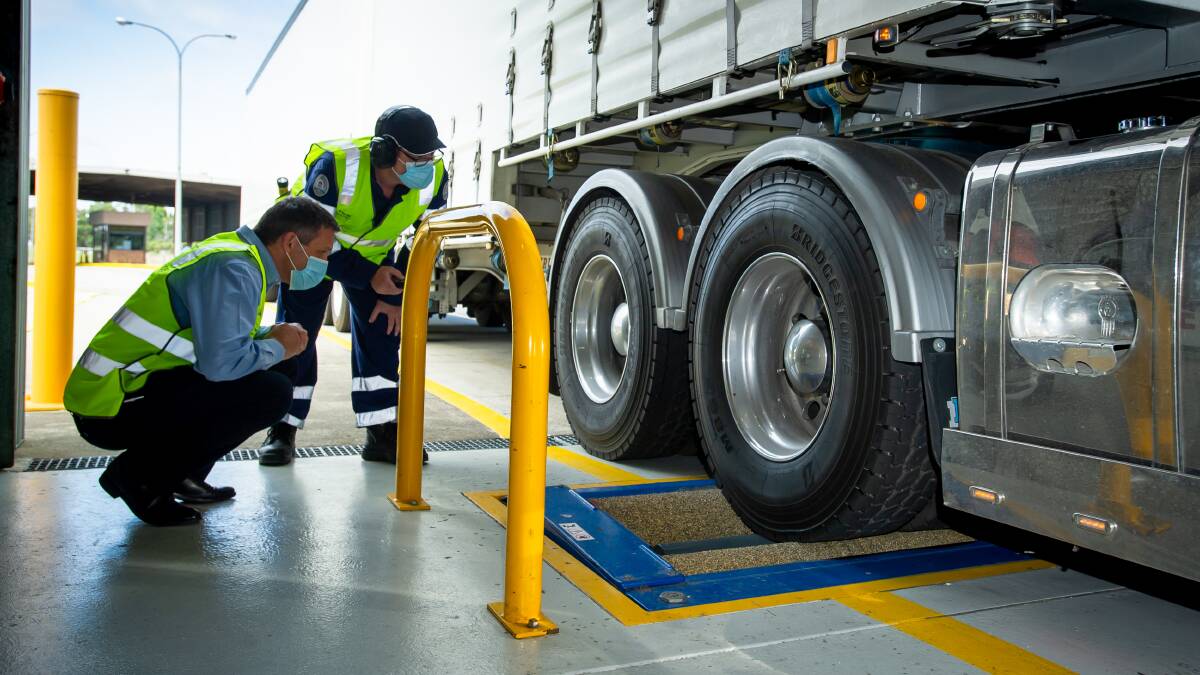
Non-compliance notices are issued following more than 15 per cent of inspections at a truck safety station on the highway linking Australia's two largest cities, Sydney and Melbourne.
The issues identified in about one in seven checks of heavy vehicles at the Hume Highway site can now be revealed as part of Blake's Legacy, an ACM campaign to improve road safety.
Statistics provided by Transport for NSW show 76,968 heavy vehicles were "intercepted" at the Marulan Heavy Vehicle Safety Station from 2019 to 2021.
There were 159,422 vehicle units inspected during that period, with 30,753 non-compliance notices issued to a driver or registered operator.
While it would appear safety issues were identified nearly 20 per cent of the time, authorities say the non-compliance rate was actually 15.3 per cent because multiple notices were issued in some cases.
The number of inspections conducted at the station has increased in each of the past three years, as has the volume of non-compliance notices issued.
More than half of the issues inspectors identified resulted in defect notices, but in excess of 4000 non-compliance findings related to weight breaches.
Fatigue or contraventions of work diary requirements were the next most common category of breach identified at Marulan, where trucks are checked on both sides of the Hume Highway.
Only a handful of non-compliance notices resulted in a formal warning, with a suite of sanctions, including prosecution, applied in respect of the rest.
Tara McCarthy, the deputy secretary of safety, environment and regulation at Transport for NSW, said the Marulan station used risk-based screening templates that were "aimed at progressively targeting and intercepting more potentially severe offences".
Vehicles stopped there pass through a screening lane, where technology is used to carry out various examinations.
Depending on what is uncovered, drivers may then be directed to proceed to a compliance check.

"Everyone has a part to play in staying safe on our roads," Ms McCarthy said.
"Crashes involving heavy vehicles are often serious because of their size and weight, regardless of who is at fault.
"While their numbers make up only 2.5 per cent of NSW motor vehicle registrations and 8.3 per cent of kilometres travelled by all NSW vehicles, heavy vehicles are involved in about 18 per cent of all road fatalities."
In the ACT, the National Heavy Vehicle Regulator is responsible for compliance and enforcement activities relating to trucks.
The regulator, which took over that role from Access Canberra in July 2019, employs two mobile safety and compliance officers.
During the first 18 months, 1079 heavy vehicles were intercepted and just 26 infringement notices issued. Nearly half of those notices related to registration issues.

The regulator also conducts investigations using number plate data from the heavy vehicle monitoring cameras stationed at the ACT-NSW border on the Federal Highway.
It was, however, unable to say how many offences have been detected by these machines in recent years because they are "not recorded by relying solely on the camera data".
The devastating consequences that can follow a truck crash have nevertheless become tragically clear in the past few years, following the incident that inspired the Blake's Legacy campaign.
Blake Corney, a four-year-old boy travelling to Toys R Us, was killed in July 2018 when a truck driven by Akis Emmanouel Livas ploughed into the back of his family's car.
ACT Chief Coroner Lorraine Walker later found autonomous emergency braking may have saved Blake's life had it been installed in Livas' truck at the time of the crash on the Monaro Highway in Canberra.
Her recommendations accordingly included that the ACT government consider ways to incentivise quicker uptake of this, as well as other modern safety technology, by trucking operators.
BLAKE'S LEGACY CAMPAIGN:







